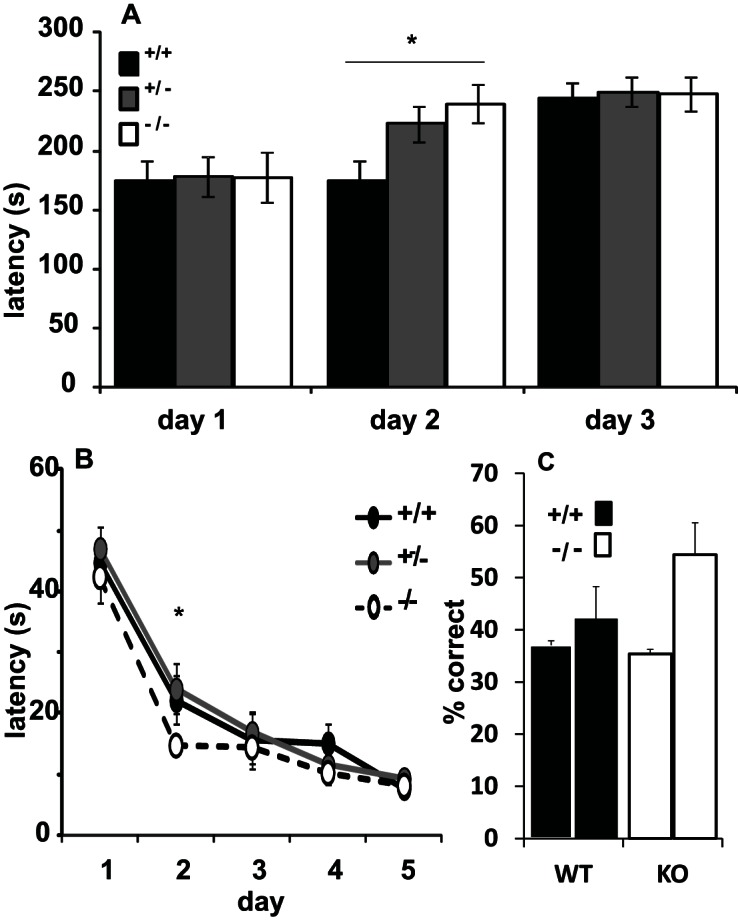Figure 2.

Acquisition and performance of the rotorod (A) Morris water maze (B) and 5-choice serial reaction time (C) tasks in constitutive CDH13 knockouts and wild-type littermates. (A) Mean ± SEM of the latencies to fall from the accelerating rotorod in wild-type, heterozygous and homozygous constitutive CDH13 knockouts. Knockouts showed faster acquisition of the task (repeated measures ANCOVA, p = 0.040). N = 24/genotype. Bp < 0.05. (B) Mean ± SEM of the latencies to reach Morris water maze platform for wild-type, heterozygous and homozygous CDH13 knockouts. Knockouts displayed no significant deficit in task acquisition (days 1–5, repeated measures ANOVA genotypeBday effect, p = 0.96), and displayed better performance on d 2 of testing when compared with mice of both other genotypes Bp < 0.05. (B) Mean ± SEM of the probe trial results. (C) Mean ± SEM of % correct responses in 5-choice serial reaction time testing in the first 2 trials of this task in male mice. Knockouts showed a trend toward faster acquisition of the task that did not achieve significance (p = 0.1). Females failed to display any trends (data not shown).
